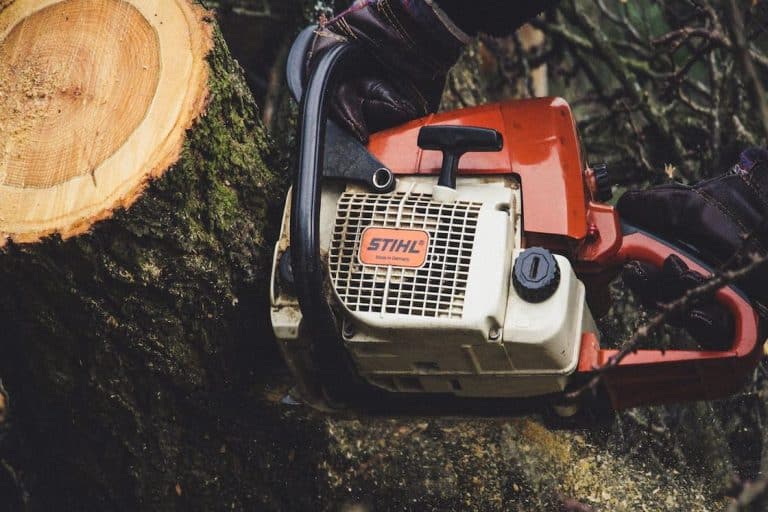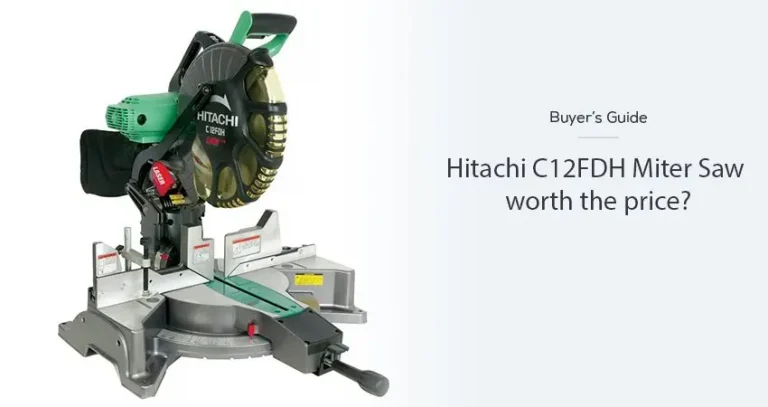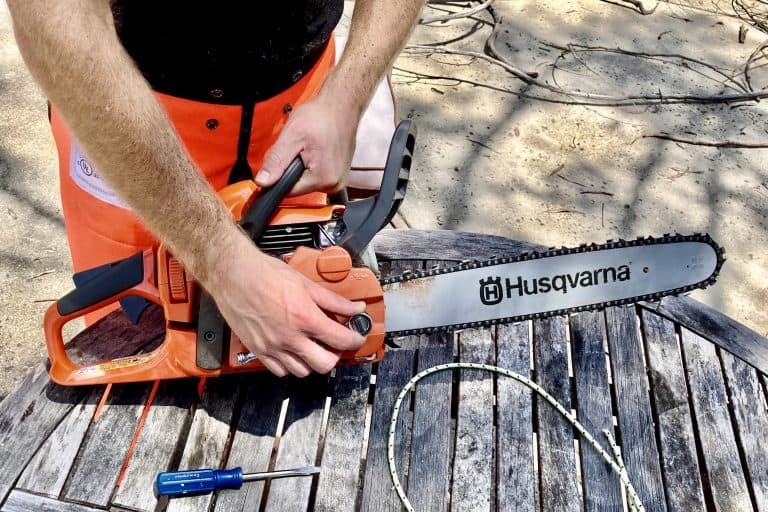A chainsaw’s bar is the metal component that extends from the tool’s body. The bar is a vital part because it supports the chain as the chain moves around the bar to cut through wooden materials. While a chainsaw’s bar is crucial, many people have questioned whether the bar should get hot during operation.
Contents
Should Your Chainsaw’s Bar Get Hot?
You shouldn’t be concerned about a chainsaw bar getting warm or slightly hot during operation. This heat is generated from friction as the chain moves around the bar to cut through wooden materials, which is a normal part of your chainsaw’s operation. However, a bar that gets too hot can indicate an underlying problem.
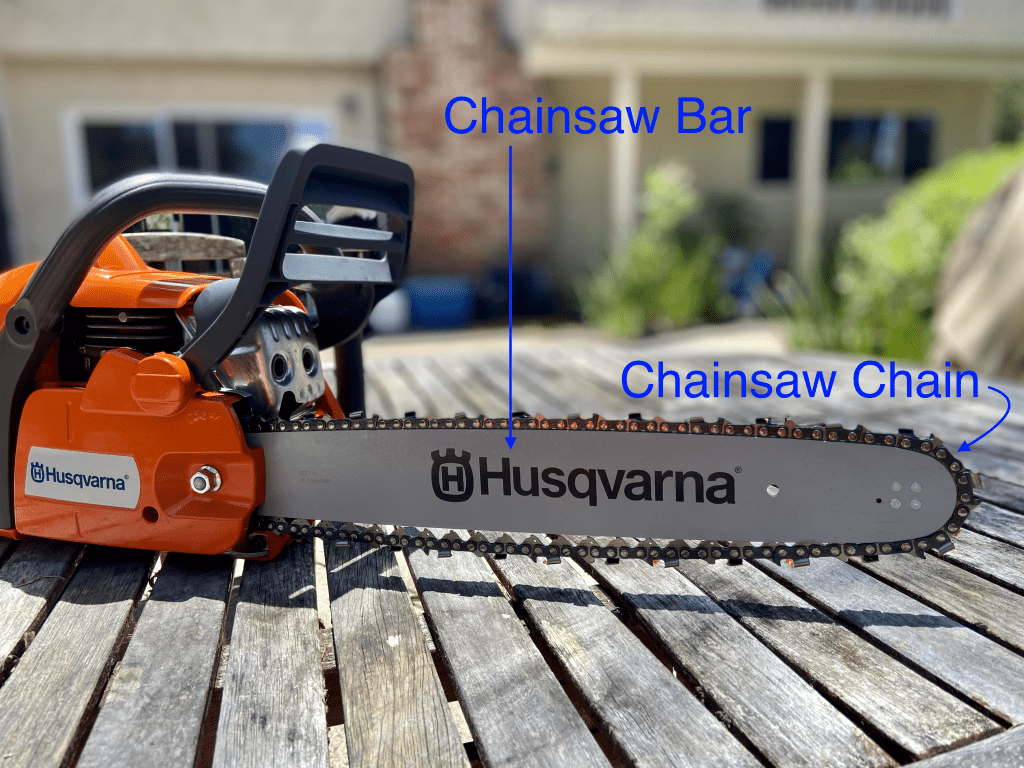
So, how do you determine if the chainsaw bar is “too hot”? Here is a good rule of thumb to follow:
- It is normal for the bar of a chainsaw to get warm to the touch during use
- It should not get hot enough to cause discomfort if you touch it.
In reality, different woods and their thickness require more or less effort for the chainsaw to cut, and this increased friction can cause the bar to get hotter.
For example, thicker wood like maple will make your bar a LOT hotter than softer woods like pine. This is not indicative of a problem with your chainsaw bar.
A brand new chainsaw bar should not overheat, but an older model bar or chainsaw increases the odds.
Issues with your chainsaw’s oiler, chain, tension, and lubrication can cause the bar to overheat. Using a chainsaw with overheating components can lead to damaging the tool or causing an injury.
A steel bar that gets too hot can bend or break. Your chain may even stretch and break.
Due to this, you should unplug a chainsaw with an overheating bar to troubleshoot the issue.
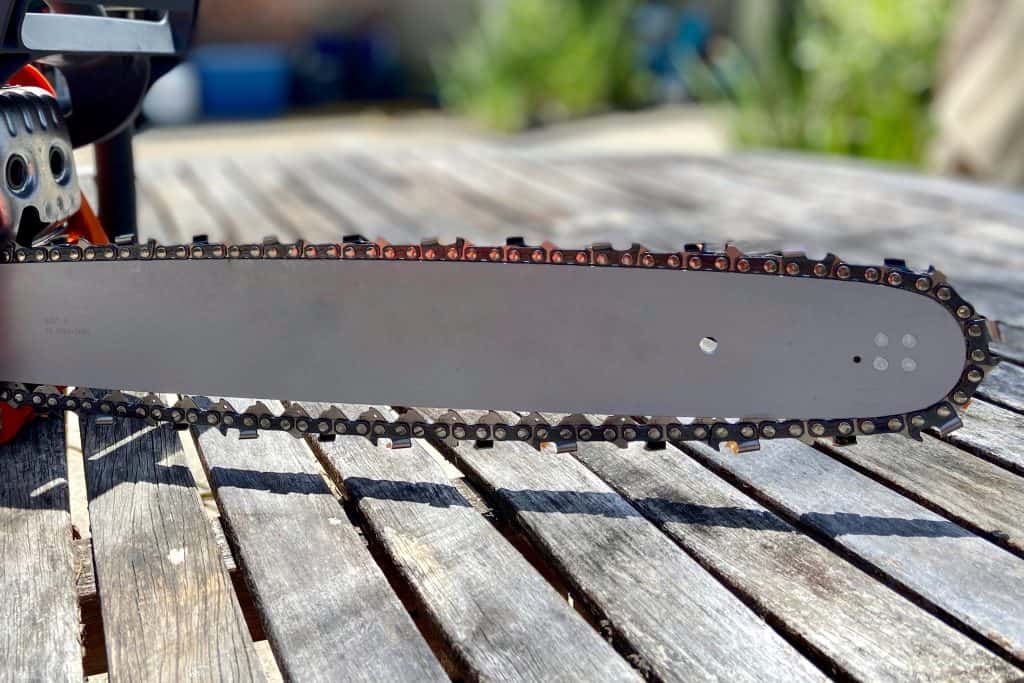
6 Reasons A Chainsaw Bar Gets Too Hot
Understanding why your chainsaw’s bar is overheating is key to fixing the underlying issue! Here are six of the most common reasons for a chainsaw bar that gets too hot!
1. Clogged Chainsaw Oiler
Your chainsaw’s oiler is responsible for lubricating the chain as it moves around the guide bar. Over time, the oiler will get clogged due to debris in the oil, using the wrong oil, or general wear to the oiler.
When this happens, your chain will run dry and cause the bar to overheat.
2. Cutting With A Dull Chain
When your chainsaw’s chain is dull, it will require more power to cut through wooden materials. Not only does this cause the bar to overheat, but it makes the chainsaw more difficult to control due to increased vibrations.
Regularly sharpening your chain will prevent this from happening.
3. Damaged Chainsaw Chain
Regular wear and tear will damage your chainsaw’s chain over time. Whenever your chain cuts wood, the chain’s teeth will become more worn.
Hitting foreign objects and abrasive materials like dirt can also damage the teeth, causing them to chip and break.
Ultimately, a damaged chain won’t run smoothly, causing your bar to overheat.
4. Incorrect Chain Tension
Your chainsaw’s components are more likely to overheat when the chain is too loose or hot. Due to this, it’s important to maintain the right chain tension.
Your manufacturer’s recommended chain tension can be found in your owner’s manual.
5. Insufficient Chain Lubrication
Your chain needs to be regularly lubricated to reduce friction while cutting materials. A chain that hasn’t been sufficiently lubricated will cause the bar and other components to overheat.
6. Using The Wrong Chain Oil
It doesn’t help to lubricate your chainsaw’s chain when using the wrong oil for the job! Make sure you only use the best chain oil recommended by your manufacturer or designed for use on chainsaws.
What To Do When Your Chainsaw Bar Gets Too Hot
You must follow these steps if you’ve noticed your chainsaw’s bar getting too hot while using it!
Step One: Unplug Your Chainsaw
Stop using your chainsaw as soon as you notice the bar is overheating. Unplug the saw and let it cool down before continuing with these troubleshooting steps. Continued use of a chainsaw with overheating components can damage your tool and injure you.
Step Two: Inspect For Damage
Inspect your chainsaw for damage once it has cooled down. You’ll need to replace any worn or damaged components before using your chainsaw again. Ensure there are no cracks, chips, or broken teeth on your chain.
Step Three: Sharpen The Chain
You’ll need to remove the chain to sharpen it to ensure you’re not using a dull chain. A round file can be used to file the chain’s teeth. Excessively worn chains should be replaced.
It’s always a good idea to keep a brand new spare chain handy!
Step Four: Apply Chain Lubrication
You can use a clean cloth and chain oil to lubricate your chain after sharpening it.
Use the cloth to apply a thin layer of oil over the top of the bar and the bottom of the chain, making sure you cover the whole length of the chain and bar.
Finally, wipe away any excess oil from these parts.
Step Five: Check The Oiler
Your chainsaw’s manual will tell you how to access the oiler. You can use a small brush to clean any debris clogging it. Oilers with severe clogs will need to be replaced. Once you’ve unclogged or replaced your oiler, fill it with the right type of oil.
Step Six: Adjust Your Chain’s Tension
Once you’ve checked the oiler and reinstalled your chain, you can adjust its tension to ensure it isn’t too loose or tight. You’ll need to loosen your chainsaw’s bar nuts to adjust the tension. When the tension is correct, there should only be a small amount of slack in the chain.
Frequently Asked Questions
How Do You Tell If Your Chainsaw Bar Is Too Hot?
There are a few ways to determine if your chainsaw’s bar is overheating. While the chain will be too hot to touch comfortably, it might produce smoke. A bar that’s bending also indicates the bar is too hot. You might even notice the chain stretching or breaking.
Is It Dangerous To Use A Chainsaw When The Bar Gets Very Hot?
It is not safe to use a chainsaw when any of the components are overheating, including the bar. Excessive heat can weaken the bar, putting it at risk of bending or breaking. Your chain can even stretch or bend when the bar gets too hot, which can lead to injuries.
Conclusion
There are many possible reasons for a chainsaw bar that gets excessively hot, including a clogged oiler, a dull or damaged chain, insufficient or incorrect chain lubrication, and using the wrong chain tension. Since a bar that gets too hot can damage your chainsaw, it’s important to turn your chainsaw off and find the underlying reason.
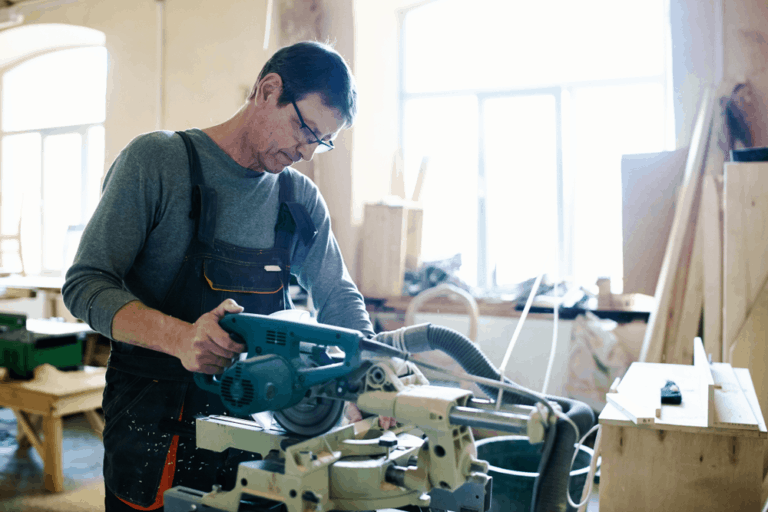
![Best Chainsaw Chains in 2023 – [Reviews & Guide] 4 Best Chainsaw Chains in 2023 – [Reviews & Guide] Best Chainsaw Chain](https://brandisawyer.com/wp-content/uploads/2021/04/Best-Chainsaw-Chains.jpg)
![DeWalt dwe7491rs Reviews – [Jobsite Table Saw] 5 DeWalt dwe7491rs Reviews – [Jobsite Table Saw] DeWalt-Dwe7491rs-Review](https://brandisawyer.com/wp-content/uploads/2020/06/DeWalt-Dwe7491rs-Review.webp)
